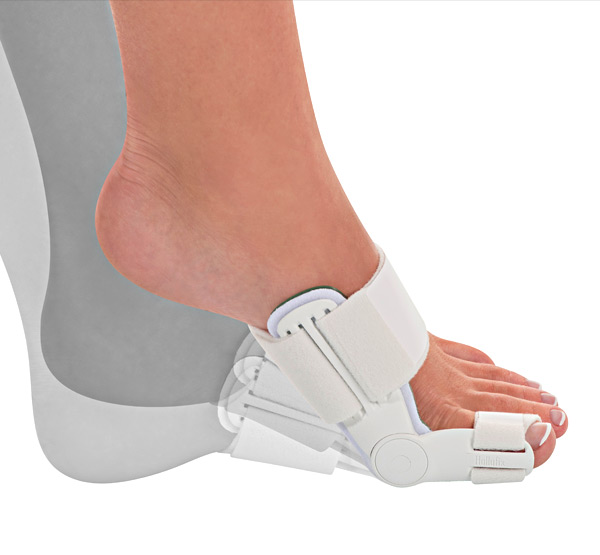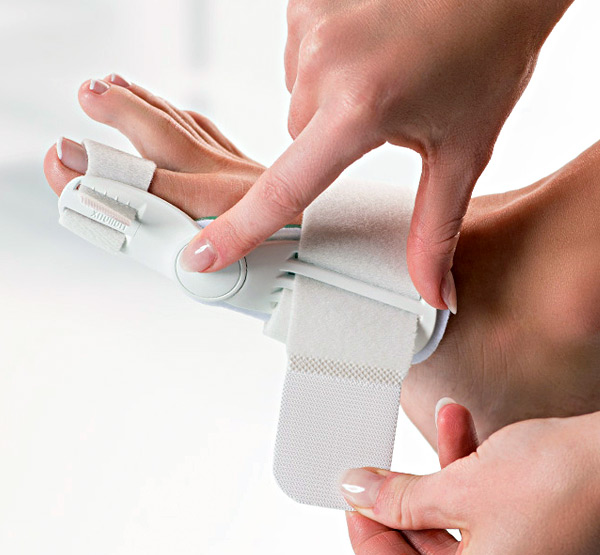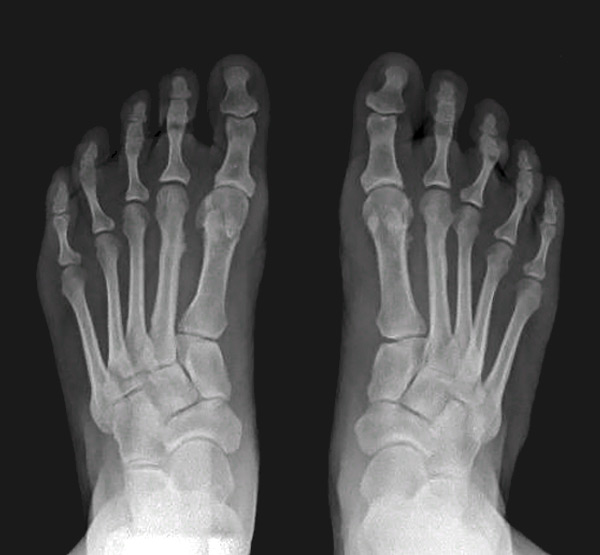Common Foot Disorders
Hallux valgus
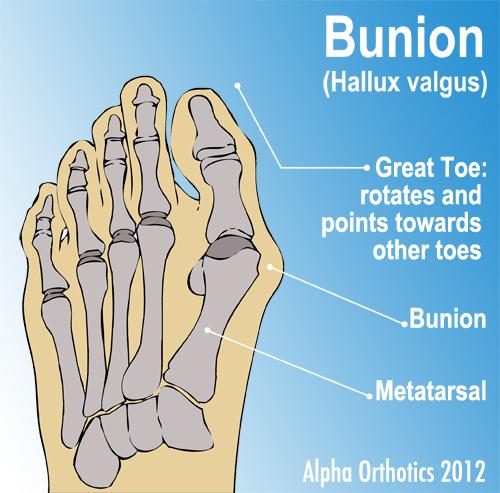
Hallux valgus is the prominent protrusion at the base joint of the big toe (metatarsophalangeal joint.) It develops as the first metatarsal (the large bone leading to the big toe) moves away from the second metatarsal which is often caused by over-pronation. The forefoot widens and forces the base joint to move outward.
With this misalignment of the first metatarsal, tendons no longer lie in the correct axis. They begin to act as a deforming force. The big toe is pulled across towards the second toe by the tendons of the big toe. The tendons between the first and second metatarsals contract over time, further contributing to the formation of a bunion.
Hallux limitus
The big toe (hallux) should have 70° – 90° of “up” motion (dorsiflexion) and 20° -25° of down motion (plantarflexion.) Foot biomechanics requires that the metatarsal move down in order for the big toe to move up. A joint that has less “up motion” is said to have hallux limitus.
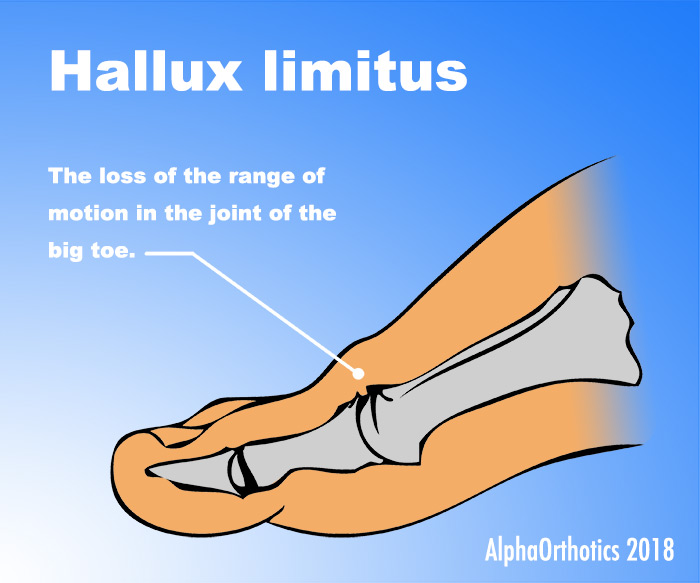
Hammertoe

A hammertoe is a permanently bent toe, usually one of the four smaller toes. Over time, hammertoe(s) become more bent due to prolonged squishing against tight, narrow or high-heeled shoes. Hammertoes can also be caused by bunions, which crowd the toes as well. Eventually, the muscles in the toe(s) won’t be able to straighten. Severe hammertoe will actually start to cross over the next toe.
Crossover toe deformity
A crossover toe is when the second toe begins to lift and the big toe starts moving over under the second toe. This condition often begins with bunion problems and occurs from damage to ligaments supporting a toe, causing a muscle imbalance – leading to slow dislocation and crossing over of the toe.
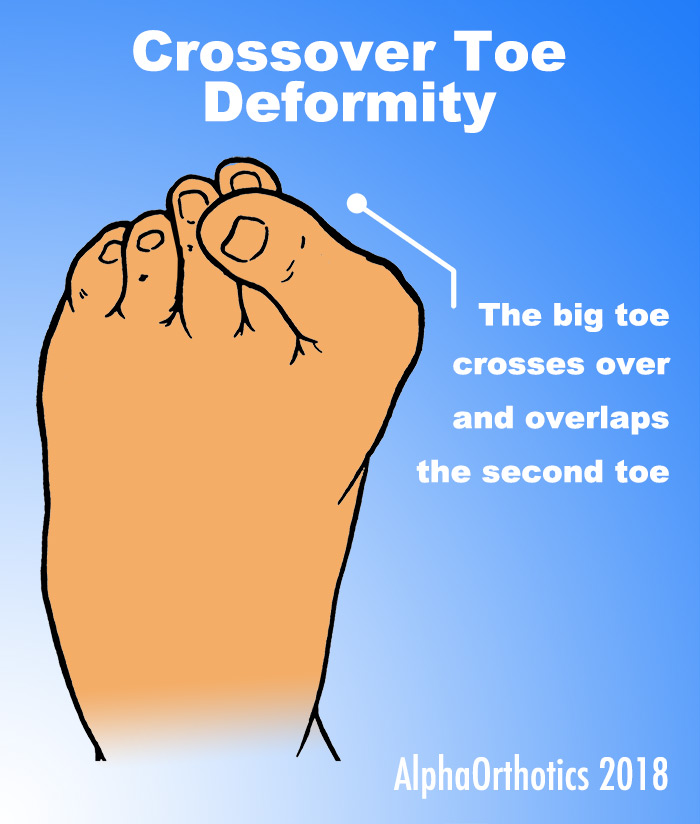
Fallen/Collapsed Arches

A fallen arch refers to the foot collapsing to a point where the entire sole of the foot comes into complete or near-complete contact with the ground. Fallen arches are often associated with over-pronation. Over-pronation occurs when the calf muscles (or Achilles tendon) are too tight and pulls up the heel bone earlier than in a normal gait. As it does, the talus (ankle bone) tilts downward and rotates inward, forcing the mid-foot to collapse.
Toe ulcer
A toe ulcer looks like a red crater in the skin. This round crater can be surrounded by a border of thickened, callused skin. This border may develop over time. In very severe ulcers, the red crater may be deep enough to expose tendons or bones.
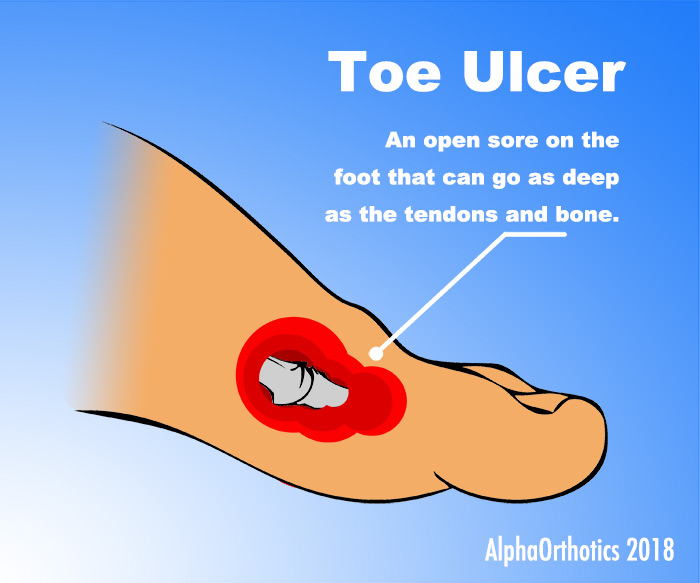
Stress fracture

Stress fracture usually starts as a small crack in the outer shell (the cortex), often invisible to an X-Ray, but over time can progress into the bone. Most common are stress fractures of the 2nd and 3rd metatarsal bones. The pain, and sometimes swelling, will occur on top of the foot. Stress fractures are usually caused by ‘overuse’ or repetitive action on the bone. They are most common on weight bearing bones of the lower leg and foot.


